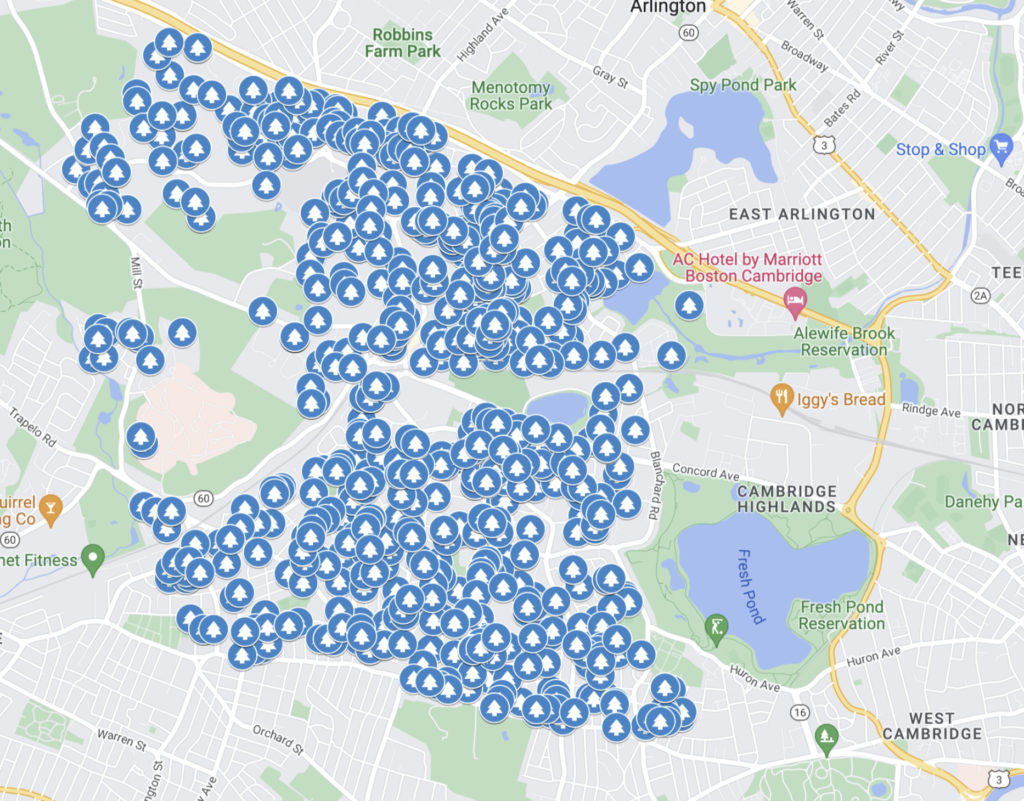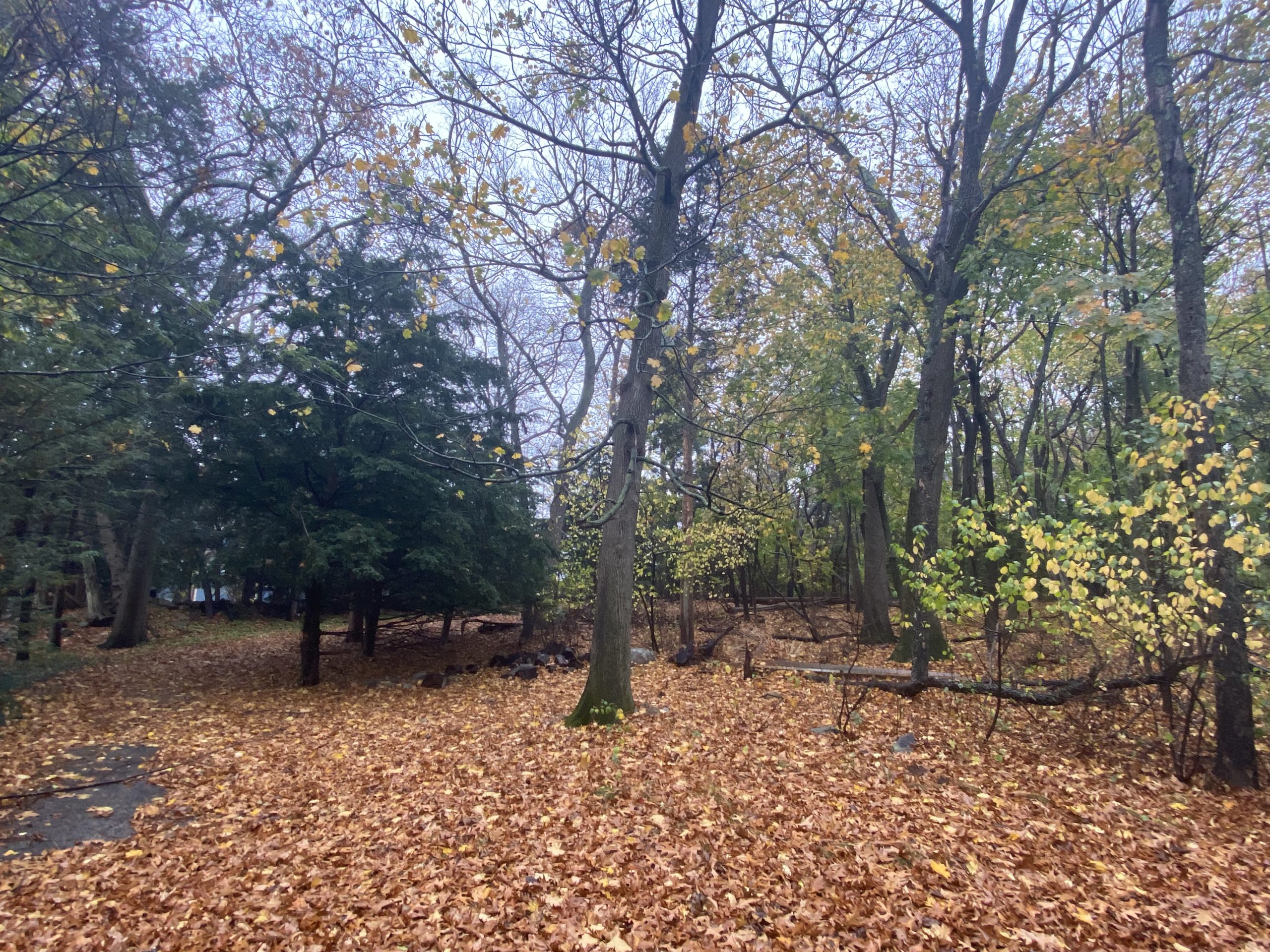Photo: The location of the proposed parking lot of the Belmont Hill School
Last fall, Tanya Austin was not at all happy with what the Belmont Hill School was proposing adjacent to her property line. As one of the closest abutters to a new parking development off Park Avenue, the Rutledge Road resident had become one of the leading opponents to the 150-space parking lot, which would include a 7,000 sq. ft. facilities structure while formalizing parking at the school and near the athletic complex on Marsh Street.
“The area is one of the few remaining open, wooded spaces in Belmont, and our town should be committing to the long-term preservation of our environment rather than to fulfillment of the short-term wants of the Belmont Hill School,” said Austin in November. “Our petition has 2,000 signatures [showing] how widespread people’s interest is in opposing this project.”
Fast forward to this week, Austin and two other homeowners who were the project’s closest abutters are now expressing their support of a “modified” updated parking plan, much to the disappointment of many who have lambasted the private school for its plan to raze the native landscape to pave the land to put up a parking lot. After a series of meetings with the school facilitated by Mark Paolillo, chair of the Select Board, and Town Administrator Patrice Garvin, “I’m satisfied with the outcome of our negotiations,” said Austin.
The agreement by the three nearest abutting homeowners – Austin and her neighbor on Rutland and a resident whose property will be adjacent to the facilities building – came as the school presented its “modified” proposal before the Planning Board on Tuesday, Feb. 7, as the board restarts the design site plan review process that originally started in October 2022.
“This might have been different if this were a request for a special permit but based on my conversation with town council for a design site plan review, it is more of an administrative hearing … the requirements are less formal,” said Matthew Lowrie, chair of the Planning Board.
The development will occur on a total of 7.1 acres of which one acre is paved, 4.8 acres are woodlands and the remaining lawns and gardens. Under the development plans, 1.7 acres will be cleared and 1.2 acres used as parking with half-an-acre landscaped.
Primarily a day school, 437 of the school’s 464 pupils commute daily from 84 communities across New England; a new parking scheme will allow the school to manage its long-term parking goals better. The revised plan is essentially a tweaking of the original blueprints presented in the fall of 2022. Released this week, the major modifications include:
- Removing the proposed outdoor above-ground fuel storage tanks at the facilities building.
- Shifting the parking lot layout to increase the distance from the closest abutters.
- Moving the fence between the parking lot and the property line; no closer than five feet from the pavement.
- Relocating the facilities building further away from an adjacent property, reducing the number of parking spaces by three.
- Adding additional plantings to reduce visual and environmental impact.
Those changes were enough for three owners of the most impacted properties to change their opposition to the plan to voicing their support for the school’s project.
“Our goal was convincing the school to voluntarily take the steps we would have to argue before the board or a legal appeal,” said Austin. After a series of meetings with the school facilitated by Mark Paolillo, chair of the Select Board, and Town Administrator Patrice Garvin, Austin said that “I’m satisfied with the outcome of our negotiations as the increased setbacks would mean less disturbance of wildlife and “to at least try to preserve the character of the area.”
While the proposal has restarted, the school has moved forward with peer review of the development – paying for outside professionals to appraise the school’s design – to determine the impact a finished project will have on parking, lightning, waste water drainage and other issues the Planning Board will oversee in the design site review. The school also has the Belmont Animal Control Officer confirm there are no endangered species occupying the land.
Critics at Tuesday’s meeting reiterated points made earlier that the project would result in the destruction of wildlife habitat and century-old trees on some of the last significant parcels of undeveloped land in the Belmont Hill neighborhood. Campaigners have gathered approximately 2,500 signatories on a petition opposing the project and have sent nearly 100 letters and emails to the Planning Board against the school’s plans.

Residents who have spoken out against the plan are facing difficult legal hurdles in their efforts to halt the development. The first obstacle is the school’s use of parking and the facilities structure are allowed under the town’s zoning bylaw in Single Residence District A. The town simply requires site review approval rather than than the more stringent special permit for a non residential building of more than 2,500 sq.-ft. and the creation of more than six parking spaces.
The second is a state law that limits communities from hindering certain developments. When a resident asked during a recent Select Board meeting how can the school proceed to build on the property, Board member Adam Dash bluntly said “The Dover Amendment.” The Massachusetts General Law hampers communities from restricting construction for agricultural, religious, and educational uses.
Belmont has its own rich experience with the law as it was instrumental in the approval of the opening of the Church of Latter-Day Saints’ Belmont temple in 2001. Lowrie noted Belmont Town Counsel George Hall has written an advisory saying the board would be in violation of the Dover Amendment if it attempted to deny the school’s application by demanding Belmont Hill first look to its main campus to accommodate the vehicles or for it to determine the number of parking spaces that are for “educational use.” Calculating the school’s supposed parking need was a deep dive by project critic Matthew Schwartz who determined the school could easily eliminate half the lot and still meet its educational needs.
In a new challenge to the project, residents with some support from the Select Board are increasingly calling for the project to undergo a Development Impact Report which is allowed in the zoning bylaws. Under a DIR, the Planning Board would determine the scope of the report including environment, social, physical and infrastructure impact, than issue a Request For Proposal that a professional development team would perform. The team would than produce an in-depth review for the Planning Board to review.
But according to Lowrie, the process is less than ideal, noting that in the past three decades, a DIR was not requested for major town developments such as the Middle and High School, the Senior Center, and several McLean parcels.
“What’s the difference between Development Impact Reports and what we’ve been doing instead which is peer reviews? Spoiler alert, the peer review is a better process,” said Lowrie.
According to Glenn Clancy, the head of the town’s Office of Community Development, the DIR is less flexible than a peer review – who are selected by his department – which can alter the review’s scope on the fly which assists in resolving conflicts between developers and the the town. Also, the cost for a peer review is picked up by the developer. Additionally, while the town can ask a developer to pay for a DIR, it may not be permissible under the Dover Amendment.
“What would a DIR add? Certainly delay,” said Lowrie, noting that the DIR “doesn’t authorize anything that can’t be done in the peer review process,” a view Clancy seconded.
“I believe professional engineering design, peer review, and compliance with section 5 has allowed the Planning Board to achieve the same purpose as if utilizing the Development Impact Report process … I think by de facto you guys are already operating under a DIR process. It’s just not specifically by that name,” said Clancy.
The parking project will return before the Planning Board on Tuesday, Feb. 14 at 7 p.m. with an emphasis on landscaping and the current tree layout.








Why is there a problem?